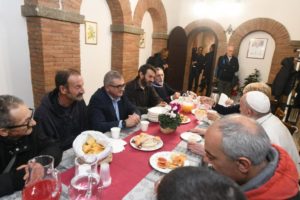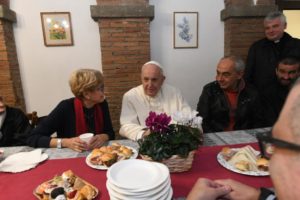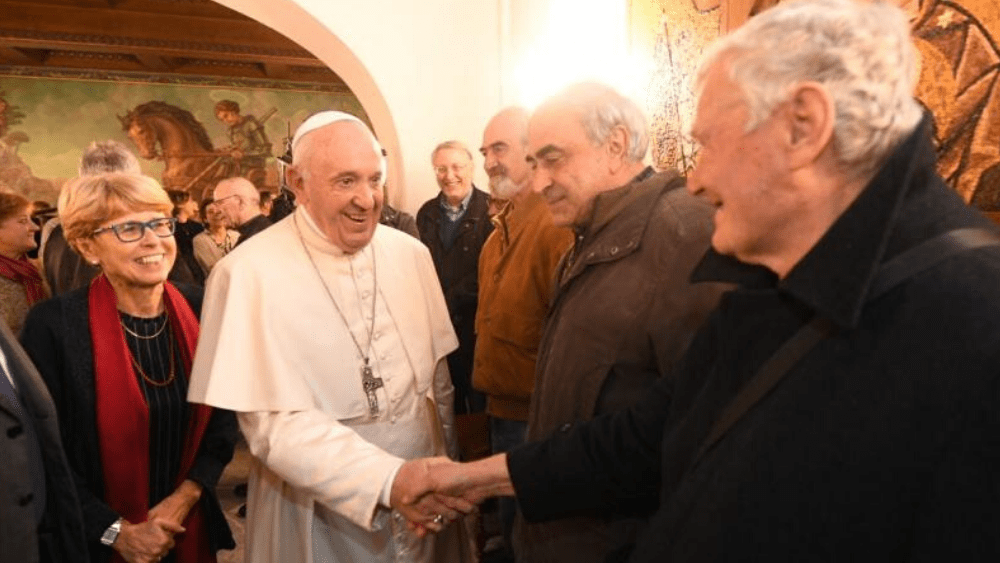Forget the Sistine Chapel, St Peter’s Basilica and Pope Nicholas II’s lavish gardens; the most exciting building in the Vatican City is now a four-storey “palace for the poor” located just a few metres from the Colonnade of San Pietro.
Palazzo Migliori is an almost-2000 square metre property in a prestigious location of Vatican City. And, as Pope Francis personally instructed his Almoner, Cardinal Konrad Krajewski, it will soon become a place where the homeless and poor of Rome can sleep, eat and learn.
The palatial property will continue to bear the name it gained from the Migliore family, who built it the beginning of the 19th century – a name that means “Palace of the Best”. Acquired by the Holy See in 1930, it was occupied until recently by a congregation of religious sisters.
According to the Sant’Egidio Community, which manages and staffs the property, Palazzo Migliori has “an elegant and noble interior, equipped with a lift to provide access for the elderly and people with disabilities. On the first floor is a large chapel, reserved for the personal and community prayer of volunteers and guests. The building was recently vacated by a congregation of religious sisters.”
“Contemplating the scene, he had this comment: ‘Beauty heals!'”
The papal leader appeared to be struck by the property’s beauty during his visit to inaugurate the building late on Friday afternoon – the eve of the Third World Day of the poor – as the Sant’Egidio Community reported:
“After a brief visit of the ground floor, reserved for the day reception, decorated with paintings of modern times, the Holy Father went to the chapel of the centre on the first floor, dedicated to St George. Contemplating the scene, he had this comment: ‘Beauty heals!'”


During the visit, the Pope dined with staff and volunteers who will reside at the centre, some of whom had experienced homelessness themselves. The papal leader reportedly spoke with them about themes dear to his heart – the culture of waste and the need to regain a sense of responsibility towards the poorest of the poor.
“He listened to the story of the volunteers who, for several years, have brought meals to those who live on the streets and the difficulties they encounter in organising the funerals of people who die on the street,” the Sant’Edigio community reported. “The Holy Father remembered the habit that existed in his youth to have a plate ready, during meals, especially on holidays, for those who needed it, stressing the need to ‘educate young people to compassion’.”
In his communique, Cardinal Krajewski described how the palace is to be used: the upper two floors are dormitories that can accommodate about 50 men and women, with the capacity to increase the number during periods of extremely cold weather. On the second floor, a refectory will provide dinner and breakfast for overnight guests.
“The Holy Father remembered the habit that existed in his youth to have a plate ready, during meals, especially on holidays, for those who needed it.”
Each day, volunteers and permanent deacons from the Diocese of Rome will prepare more than 250 hot meals in the property’s well-equipped kitchen then in the evening distribute them to the poor who take refuge in Rome’s major railway stations.
In addition, volunteers will run day services on the first and second floors of the palace, with rooms for conversation and counselling, access to computers, reading and recreation and other educational and cultural activities.
And the best part of this seriously good news? The construction company that renovated the “Palace of the Best” employed a group of homeless people, at the Vatican’s urging, and were so impressed by their work ethic that it hired them!
Email This Story
Why not send this to a friend?



